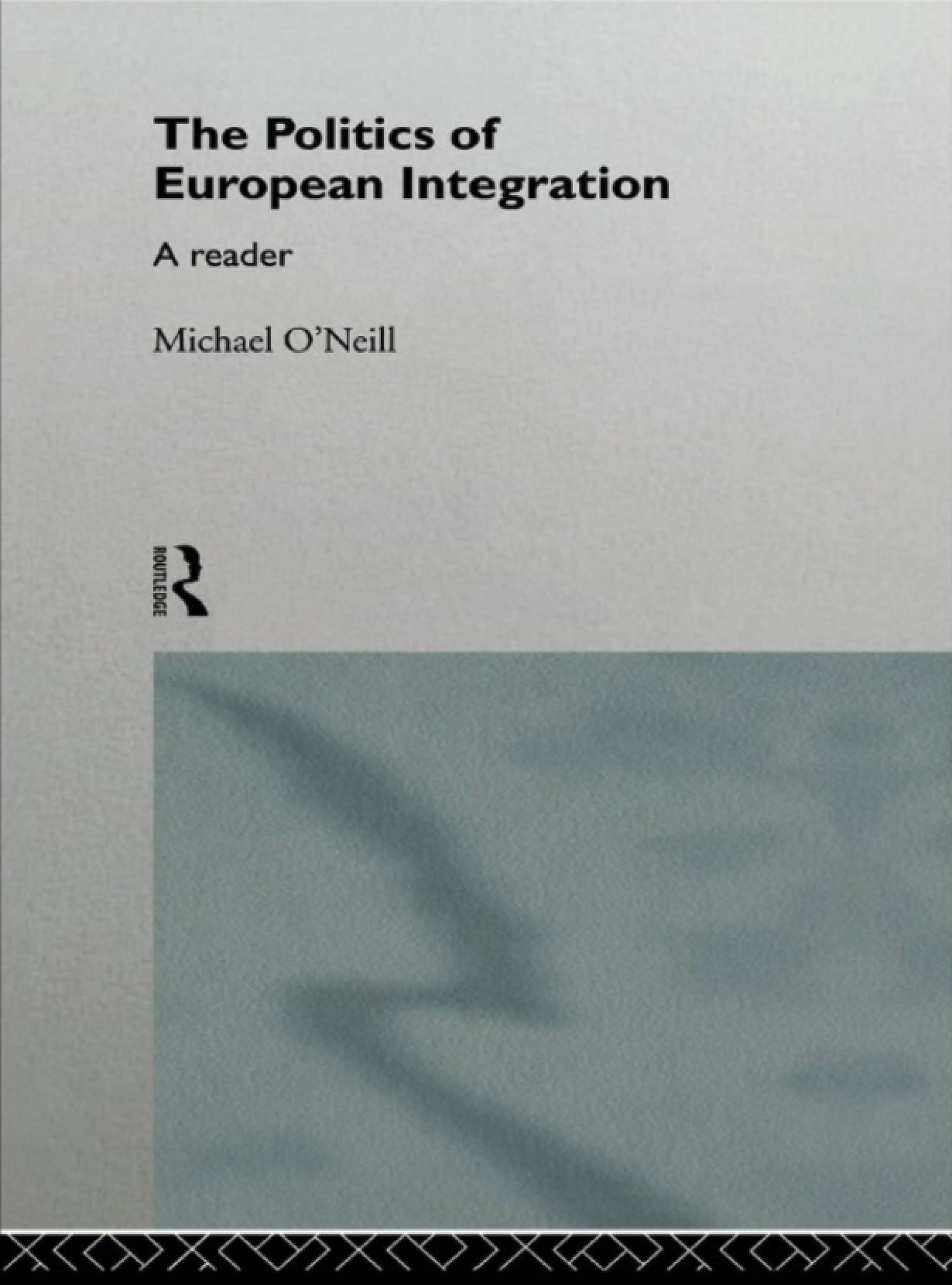CONTENT
Part I – Origins, scope, issues
1. The request for European integration
Part II – The paradigms of European integration
2. The supranational paradigm (1): the federalist approach
3. The supranational paradigm (2): functionalist models
4. The statecentric paradigm
5. The syncretic paradigm: the ambiguities of European integration
6. Theoretical déjà vu?
Part III – Documents
1. W. Lipgens, ‘The major political consequences of the second world war,
2. Alan Milward, ‘Reconstruction and integration,
3. W. Lipgens, ‘The triumph of the supranational principle in the resistance,
4. Karl Kaiser, ‘L,Eruope des savants: Europe integration and the social sciences,
5. R.J. Harrison, ‘Integration theory: context, scope and method,
6. Charles Pentland, International theory and European Integration
7. J.B. Priestley, ‘Federalism and culture,
8. H.N. Brailsford, ‘The federal idea,
9. Lord Lothian, ‘The ending of armageddon,
10. W. Lipgens, ‘Motives for European unity: the summing up by the Geneva conference of resistance fighters,
11. J. Monnet, ‘A ferment of change,
12. A. Spinelli, the European adventure – Tasks for the Enlarged community
13. M. Burgess, ‘The European Community,s federal heritage
14. Samuel Brittan. ‘Let fools contest about the forms,
15. E. Wistrich, ‘A federal democracy,
16. D. Mitrany, ‘The prospect of integration: federal or functional,
17. D. Mitrany, ‘A working peace system,
18. E. B. Haas, The uniting of Europe: Political, social and economic
19. E.B. Haas, ibid
20. L.N. Lindberg and S.A. Scheingold, ‘Alternative models of systems change,
21. E.B. Hass, ‘The study of regional integration: reflections on the joy and anguish of pretheorizing,
22. E.B. Haas, ‘Turbulent fields and the theory of regional integration,
23. S. Hoffmann, ‘The European process at Atlantic cross purposes,
24. S. Hoffman, ‘Europe,s identity crisis: between the past and America,
25. S. Hoffman, ‘Obstinate or obsolete? The fate of the nation-state and the case of western Europe.
26. M. Forsyth, ‘Federation, federal union, federal state,
27. J. Pinder, ‘Why the single market is a step towards federal union,
28. W. Wallace, ‘Europe as a confederation: the community and the nation-state,
29. M. Forsyth, Unions of states: The theory and practice of confederation
30. P. Taylor, ‘ The confederal phase,
31. S. Bulmer, ‘Domestic politics and European Community policy making,
32. H. Nau, ‘From integration to interdependence: gains, losses, and continuing gaps,
33. C. Webb, ‘Theoretical perspectives and problems,
34. S. Bulmer, ‘The European Council,s first decade: between interdependence and domestic politics,
35. W. Wallace, ‘Less than a federation, more than a regime: the community as a political system,
36. F. Scharpf, ‘The joint decision trap: lessons from German federalism and European integration
37. M. Burgess, Federalism and the European Union
38. J. Pinder, ‘European community and nation-state: a case for a neo- federalism?,
39. D. Muttimer, ‘1992 and the political integration of Europe: neo-functionalism reconsidered,
40. R. O. Keohane and S. Hoffmann, ‘Conclusions: community politics and institutional change,
41. A. Moravcsik, ‘Negotiating the single European Act: national interests and conventional statecraft in the European Community,
42. A. Moracvsik, ‘Preferences and power in the European Community: a liberal intergovernmentalist approach,
43. W. Sandholtz and J. Zysman, ‘1992: recasting the European bargain,
44. H. Kastendiek, ‘Covergence or a persistent diversity of national interests?,
45. A. Bressand, ‘Futures for economic integration. Beyond interdependence: 1992 as a global challenge,
46. A. Smith, ‘National identities and he idea of European unity,

